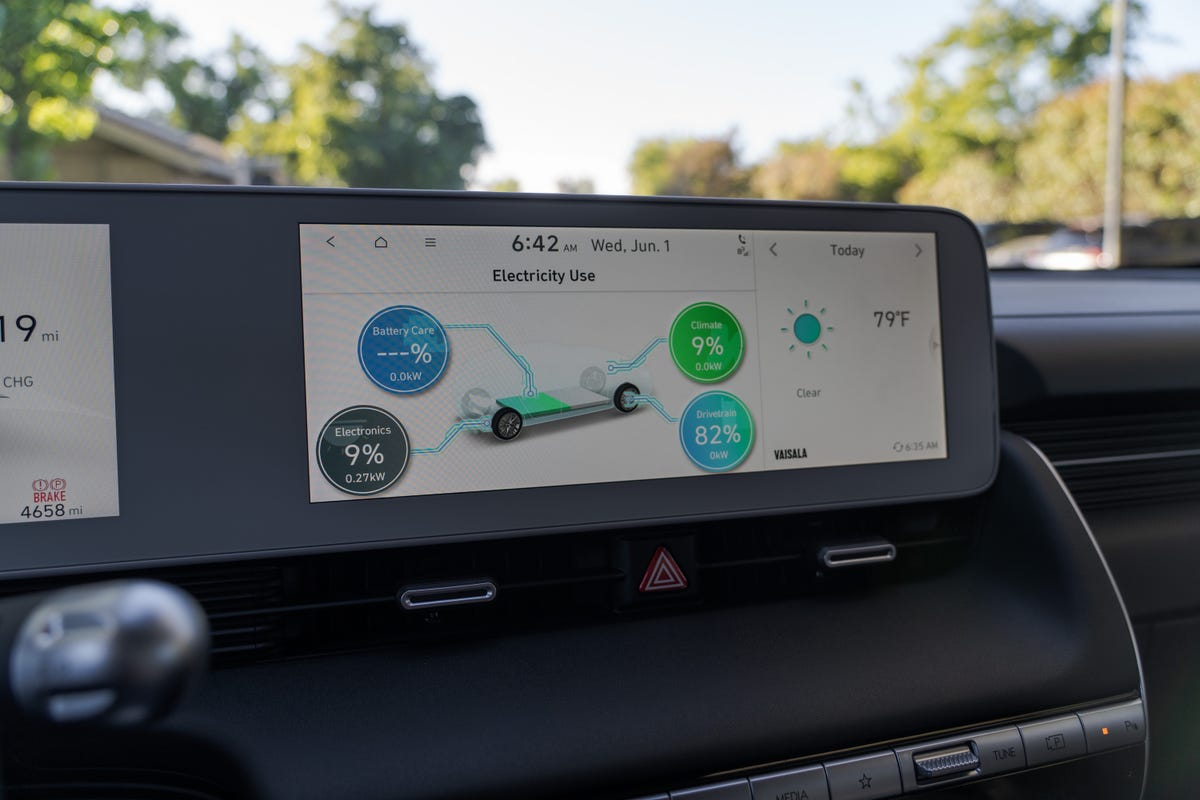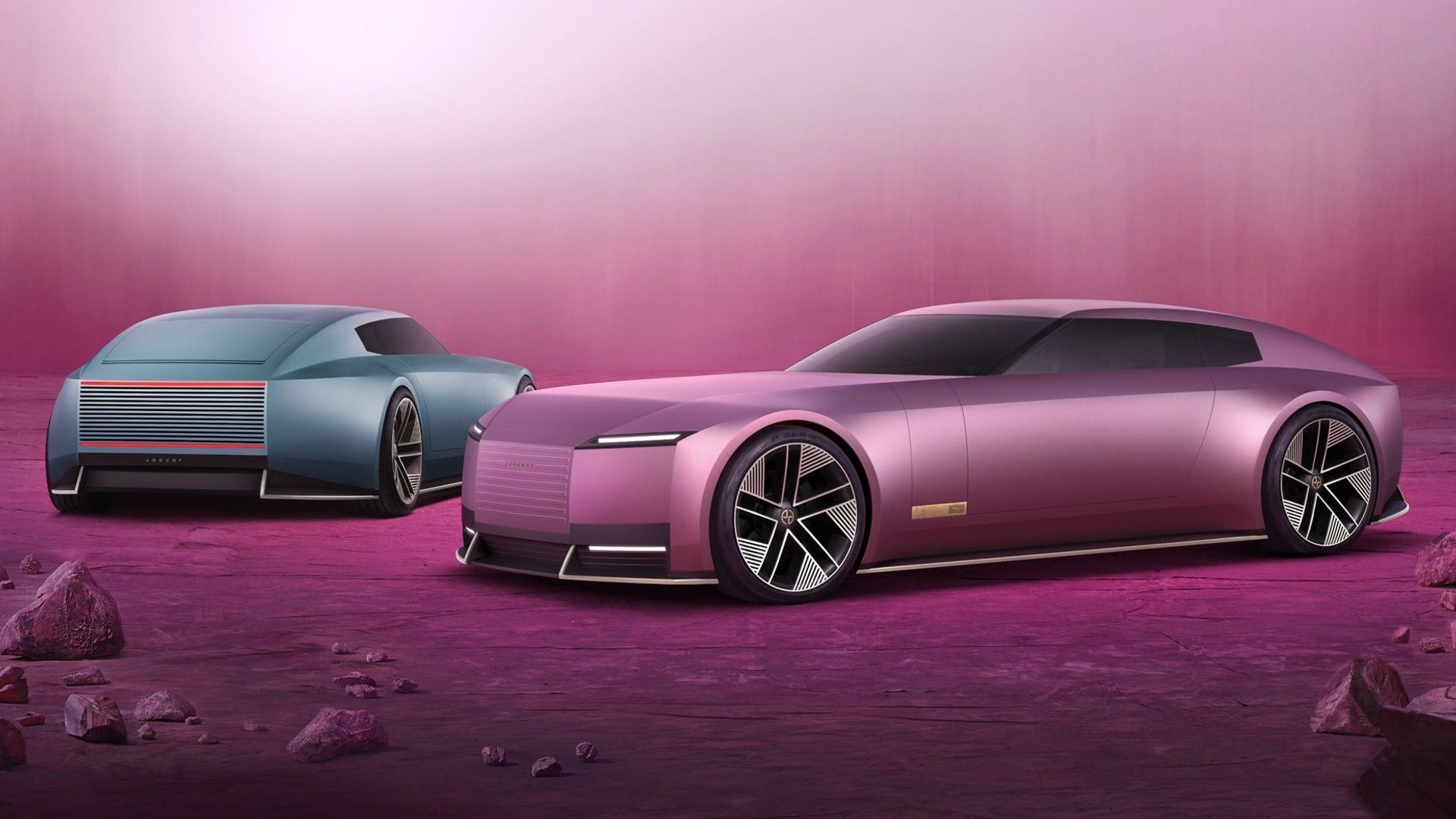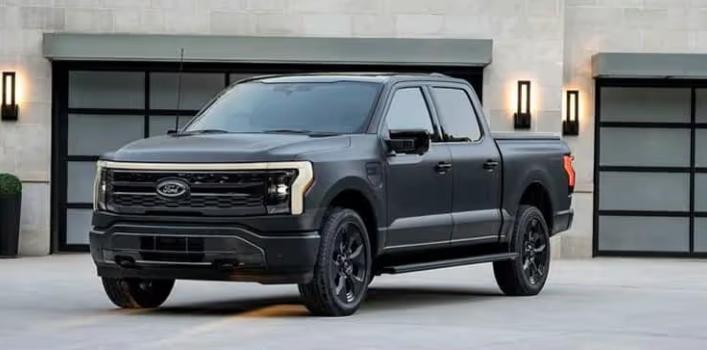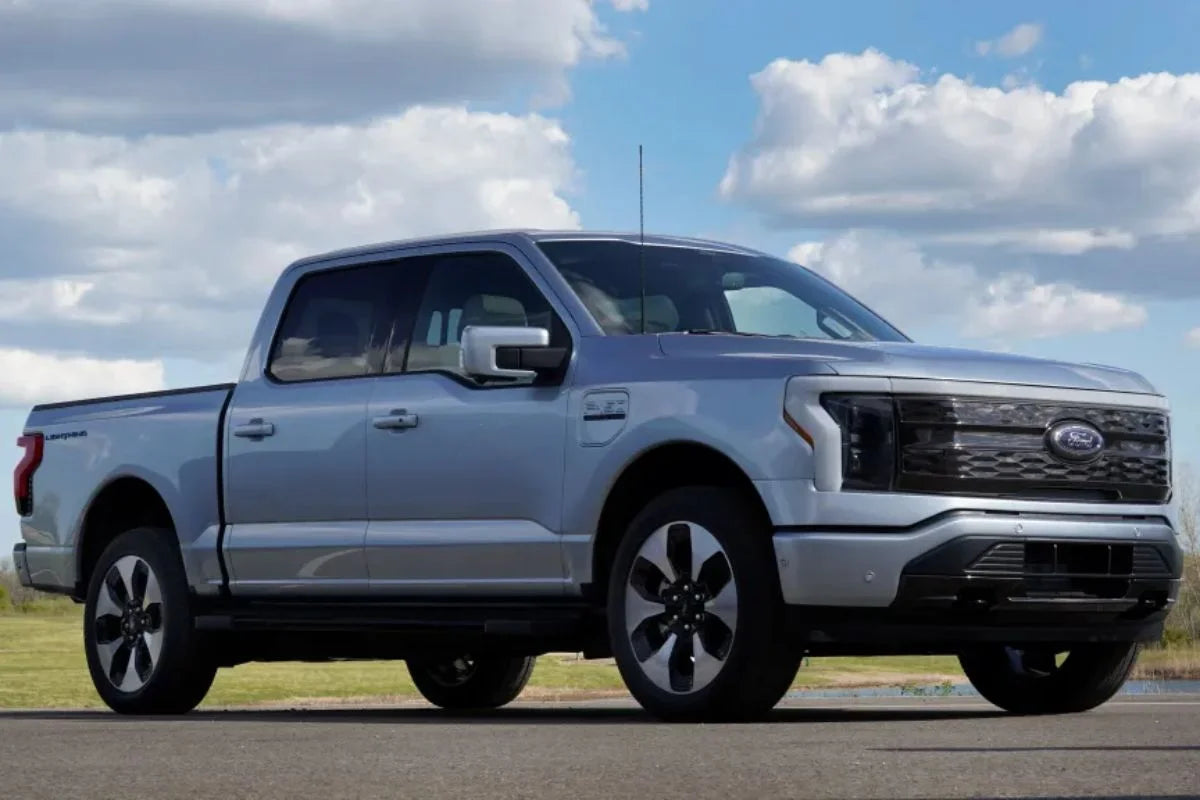Elektrofahrzeuge verändern unsere Fahrweise. Doch um ihre Reichweite – insbesondere unter schwierigen Bedingungen – zu maximieren, ist mehr als nur effizientes Fahrverhalten erforderlich. Viele Besitzer von Elektrofahrzeugen übersehen versteckte Einstellungen in der Software ihres Fahrzeugs, die die Reichweite deutlich erhöhen, Energie sparen und die Ladehäufigkeit reduzieren können. In diesem Artikel decken wir fünf versteckte Einstellungen für Elektrofahrzeuge auf, die Sie wahrscheinlich nicht nutzen, erklären ihre Auswirkungen auf die Batterieleistung und zeigen, wie sie in Kombination mit tragbaren Ladegeräten und NEMA-konformer Infrastruktur Ihre Mobilität verlängern .
1. Passen Sie die regenerative Bremsung für mehr Effizienz an
Regeneratives Bremsen ist ein Markenzeichen von Elektrofahrzeugen. Beim Abbremsen wird kinetische Energie in gespeicherte Batterieleistung umgewandelt. Bei vielen Elektrofahrzeugen lässt sich die Intensität dieser Funktion jedoch anpassen, was sich direkt auf die Reichweite auswirken kann. Standardeinstellungen priorisieren oft ein vertrautes Fahrgefühl gegenüber maximaler Energierückgewinnung. Durch eine erhöhte Intensität des regenerativen Bremsens kann jedoch mehr Energie zurückgewonnen werden, insbesondere im Stop-and-Go-Verkehr.
Laut einer Studie der Electric Vehicle Association aus dem Jahr 2023 kann Teslas regenerativer Bremsmodus „High“ beispielsweise die Reichweite im Stadtverkehr um bis zu 10 % erhöhen. Umgekehrt kann eine geringere Bremsintensität auf der Autobahn bei minimalem Bremsen den unnötigen Luftwiderstand reduzieren. Aktivieren Sie diese Funktion im Einstellungsmenü Ihres Elektrofahrzeugs – normalerweise unter „Fahren“ oder „Batterie“. Kombinieren Sie diese Einstellung mit einem tragbaren Ladegerät für unterwegs, um die zurückgewonnene Energie immer optimal nutzen zu können.

2. Optimieren Sie die Klimaregelung, um Batterie zu sparen
Heiz- und Kühlsysteme sind dafür bekannt, die Reichweite von Elektrofahrzeugen zu verringern. Bei extremen Wetterbedingungen kann sich die Reichweite um 20–30 % verringern. Die meisten Elektrofahrzeuge verfügen über eine versteckte Einstellung namens „Eco-Klimamodus“ oder „Energiesparklima“, die den Stromverbrauch der Klimaanlage begrenzt. Beispielsweise kann dieser Modus die Heizleistung drosseln oder die Umluft gegenüber der Zufuhr kalter Außenluft priorisieren, um die Batterie zu schonen.
Bei Temperaturen unter Null können Sitz- und Lenkradheizungen anstelle einer Kabinenheizung erheblich Energie sparen . Eine Studie des AAA aus dem Jahr 2022 ergab, dass Sitzheizungen 50 % weniger Strom verbrauchen als Kabinenheizungen. Wenn Sie unterwegs mit einem tragbaren Ladegerät an eine NEMA 14-50-Steckdose angeschlossen sind, klimatisieren Sie die Kabine vor, während das Ladegerät angeschlossen ist, um eine Entladung der Batterie während der Fahrt zu vermeiden. Suchen Sie im Menü Ihres Elektrofahrzeugs unter „Klima“ oder „Energie“ nach dieser Einstellung.

3. Aktivieren Sie den Reichweitenmodus für lange Fahrten
Viele Elektrofahrzeuge verfügen über einen „Reichweitenmodus“ oder „Eco-Modus“, der mehrere Systeme für maximale Effizienz optimiert. Diese Einstellung reduziert häufig die Beschleunigungsleistung, senkt die Höchstgeschwindigkeit und optimiert das Batteriemanagement, um die Reichweite gegenüber der Leistung zu priorisieren. Beispielsweise kann der Reichweitenmodus des Ford Mustang Mach-E laut Ford-Testdaten aus dem Jahr 2024 die Reichweite um bis zu 15 % erhöhen, indem er die Leistung nicht unbedingt erforderlicher Systeme begrenzt.
Dieser Modus eignet sich ideal für lange Autobahnfahrten, bei denen gleichmäßige Geschwindigkeiten entscheidend sind. Er ist jedoch möglicherweise nicht für sportliches Fahren geeignet. Schalten Sie ihn daher in der Stadt aus, wenn schnelle Beschleunigung erforderlich ist. Wenn Sie eine längere Fahrt planen, stellen Sie sicher, dass Ihr tragbares Ladegerät mit NEMA-Steckdosen an Raststätten kompatibel ist, damit Sie ohne Reichweiteneinbußen laden können. Der Reichweitenmodus befindet sich normalerweise unter „Fahrmodi“ oder „Batterieeinstellungen“.

4. Optimieren Sie die Ladegrenzen, um die Batteriegesundheit zu erhalten
Das Aufladen Ihres Elektrofahrzeugs auf 100 % scheint die beste Möglichkeit zu sein, die Reichweite zu maximieren. Es kann jedoch die Batterie mit der Zeit belasten und ihre langfristige Kapazität verringern. Die meisten Elektrofahrzeuge verfügen über eine versteckte Einstellung, die die Ladegrenze auf 80–90 % begrenzt. Dies schont die Batterie und damit indirekt die Reichweite. Eine intakte Batterie behält ihre Leistung länger und gewährleistet so eine gleichbleibende Reichweite über Jahre hinweg.
Stellen Sie für den täglichen Gebrauch die Grenze auf 80 % ein – das reicht für die meisten Fahrten aus und schont gleichzeitig die Batterie. Auf langen Fahrten können Sie die Grenze bei Bedarf vorübergehend auf 100 % erhöhen, insbesondere wenn Sie zu Hause mit einem NEMA-konformen Level-2-Ladegerät oder unterwegs mit einem tragbaren Ladegerät laden. Tesla beispielsweise ermöglicht diese Einstellung unter „Batterieeinstellungen“, während andere Elektrofahrzeuge sie unter „Ladeeinstellungen“ auflisten. Eine Studie der Battery University aus dem Jahr 2023 ergab, dass eine Begrenzung der Ladung auf 80 % die Batterielebensdauer um 20 % verlängern kann.

5. Verwenden Sie eine adaptive Geschwindigkeitsregelung mit Energieoptimierung
Der adaptive Tempomat (ACC) dient nicht nur dem Komfort, sondern kann in Kombination mit Energieoptimierungseinstellungen auch die Reichweite erhöhen. Viele moderne Elektrofahrzeuge, wie der Hyundai Ioniq 5 und der BMW i4, verfügen über einen „Eco“- oder „Energiespar“-Modus im ACC, der Beschleunigung und Verzögerung für maximale Effizienz anpasst. Diese Einstellung minimiert abrupte Leistungsspitzen und sorgt für einen gleichmäßigeren Energieverbrauch.
Beispielsweise kann der Smart Cruise Control mit Eco-Modus des Ioniq 5 die Reichweite auf Autobahnen um 5–8 % verbessern, indem er die Geschwindigkeit konstant hält und die Rekuperation bei Staus optimiert. Dies ist besonders nützlich auf langen Fahrten, bei denen Lademöglichkeiten rar sind. Wenn Sie auf einem Campingplatz auf ein tragbares Ladegerät mit NEMA 6-50-Steckdose angewiesen sind, sorgt diese Einstellung dafür, dass Sie jeden Kilometer weit fahren können, bevor Sie wieder aufladen müssen. Suchen Sie nach dieser Funktion unter „Fahrerassistenz“ oder „Tempomat“.

Bonus-Tipp: Nutzen Sie geplantes Laden für mehr Effizienz
Obwohl es sich nicht um eine „versteckte“ Funktion handelt, wird die geplante Ladung oft nicht ausreichend genutzt. Sie kann die Reichweite indirekt erhöhen, indem sie die Batterietemperatur vor der Fahrt optimiert. Bei den meisten Elektrofahrzeugen können Sie das Laden außerhalb der Spitzenzeiten oder zu Zeiten planen, in denen die Batterie auf optimale Temperatur vorkonditioniert werden kann. Eine warme Batterie lädt effizienter und bietet eine bessere Reichweite, insbesondere bei kaltem Wetter.
Wenn Sie beispielsweise in den frühen Morgenstunden mit einem NEMA-konformen Level-2-Ladegerät zu Hause laden, ist die Batterie für Ihren Arbeitsweg optimal temperiert. Unterwegs können Sie mit einem tragbaren Ladegerät den Ladevorgang auf einen Zeitpunkt mit niedrigeren Außentemperaturen legen. Diese Einstellung finden Sie normalerweise unter „Laden“ oder „Batteriemanagement“ im Menü Ihres Elektrofahrzeugs.

Fazit: Schöpfen Sie das volle Potenzial Ihres Elektrofahrzeugs aus
Die Maximierung der Reichweite Ihres Elektrofahrzeugs hängt nicht nur von Fahrgewohnheiten oder Ladeinfrastruktur ab – es geht auch darum, die in Ihrem Fahrzeug verbaute Technologie optimal zu nutzen. Durch die Anpassung der Rekuperationsbremse, die Optimierung der Klimaanlage, die Aktivierung des Reichweitenmodus, die Feinabstimmung der Ladegrenzen und die Nutzung des energieeffizienten adaptiven Tempomats können Sie Ihre Reichweite je nach Bedingungen um 15–30 % erhöhen. Kombinieren Sie diese Einstellungen mit zuverlässigen Tools wie einem tragbaren Ladegerät und NEMA-kompatiblen Steckdosen, und Sie sind für jede Fahrt gerüstet – egal ob für den täglichen Arbeitsweg oder eine Überlandfahrt.
Mit der Weiterentwicklung der Elektrofahrzeugtechnologie integrieren Hersteller immer mehr dieser intelligenten Funktionen in ihre Fahrzeuge. Nehmen Sie sich die Zeit, das Einstellungsmenü Ihres Elektrofahrzeugs zu erkunden – Sie werden überrascht sein, welches ungenutzte Potenzial für mehr Reichweite schlummert. Experimentieren Sie noch heute mit diesen versteckten Einstellungen und fahren Sie mit jeder Ladung weiter.
Empfohlene Lektüre: Volkswagen-Elektrofahrzeuge sollen bis 2025 an Teslas Supercharger-Netzwerk angeschlossen werden








Aktie:
Wie schützen Sie Ihre EV-Batterie bei kaltem Wetter?
Ford-Ladeleitfaden für Elektrofahrzeuge: Mustang Mach-E und F-150 Lightning